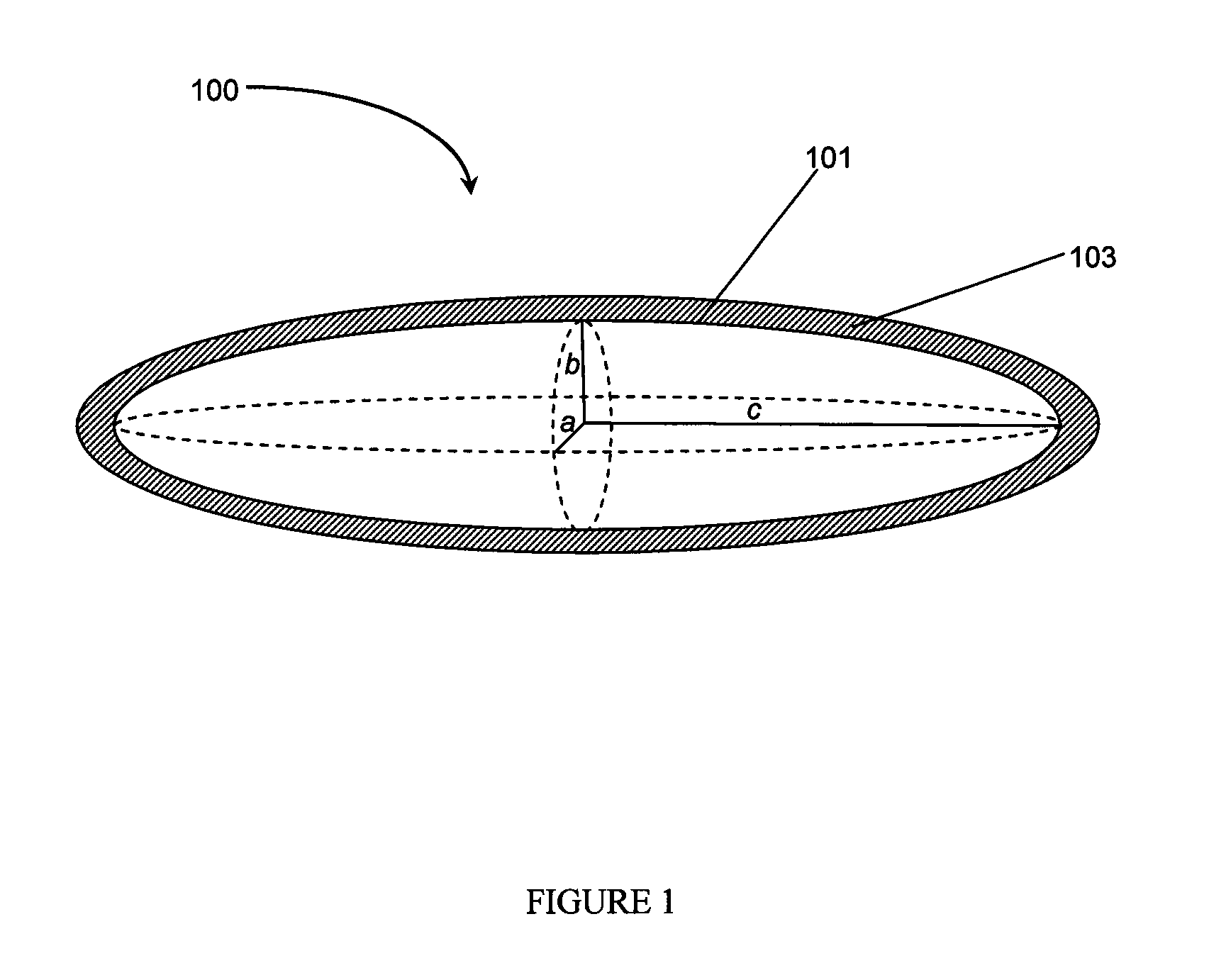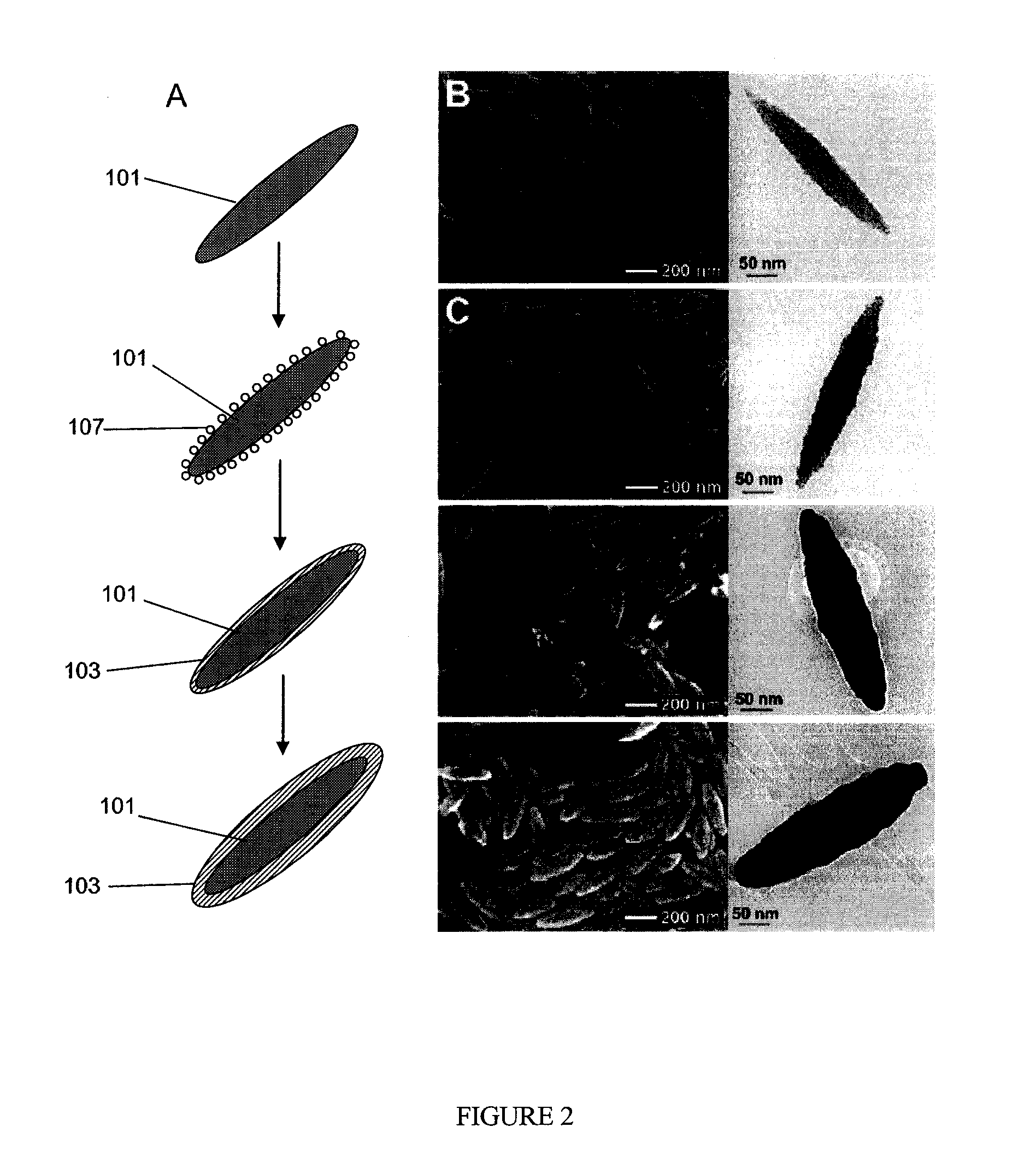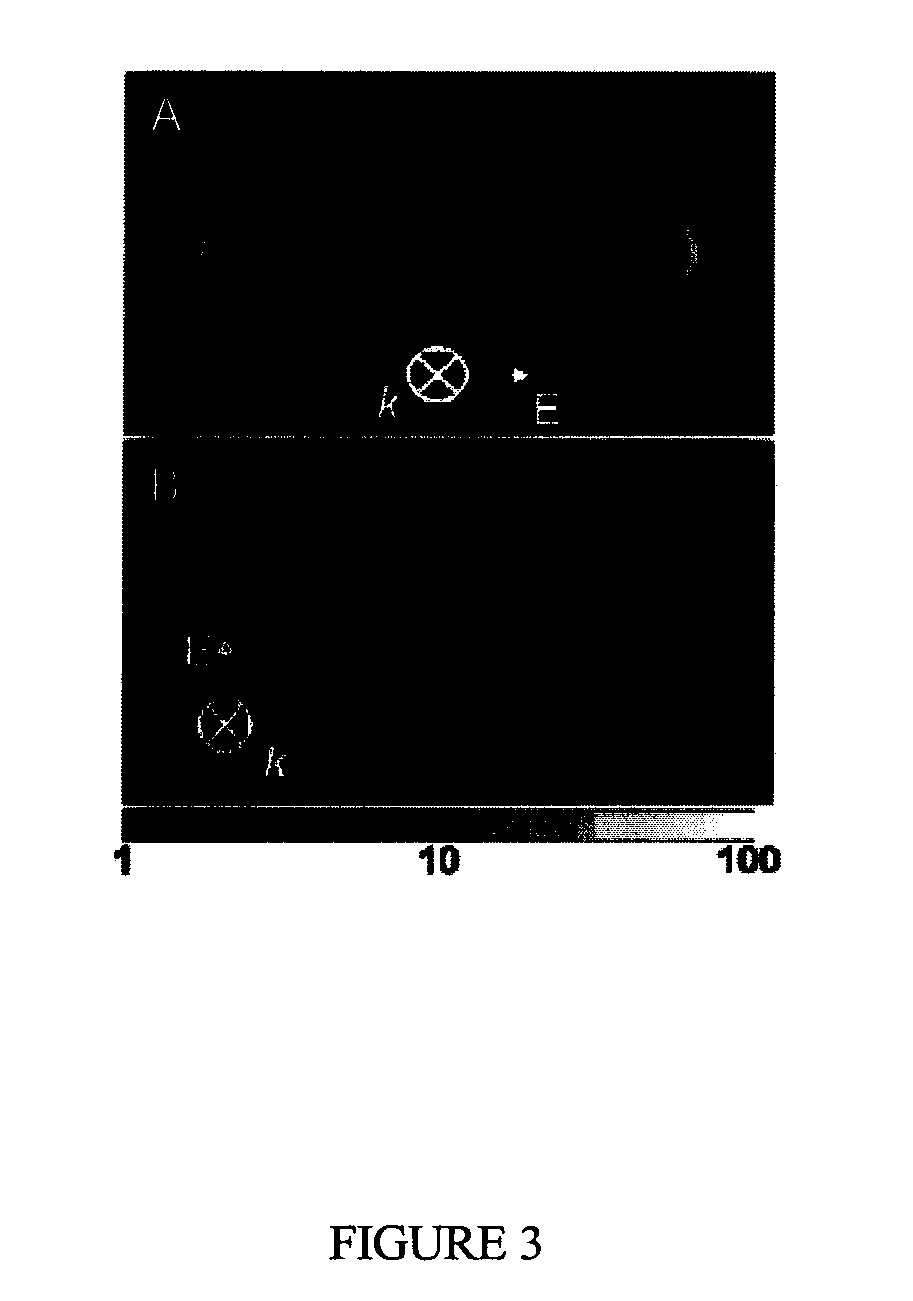Nanorice particles: hybrid plasmonic nanostructures
a technology of nanostructures and nanoparticles, applied in the field of nanoparticles, can solve the problems of formidable task of designing and fabricating nanostructures that combine highly structurally tunable plasmon resonances with large, well-defined local optical fields
- Summary
- Abstract
- Description
- Claims
- Application Information
AI Technical Summary
Benefits of technology
Problems solved by technology
Method used
Image
Examples
example 1
Nanorice Particle Fabrication
Materials
[0050]Ferric chloride, (3-aminopropyl)trimethoxysilane, tetrachloroauric acid, tetrakis hydroxymethyl phosphonium chloride were purchased from Sigma-Alrdrich (St. Louis, Mo.). 37% formaldehyde, potassium dihydrogen phosphate and 200 proof ethanol were obtained from Fisher Scientific (Hampton, Mass.). All the chemicals were used as received without further purification. Ultrapure water (18.2 MO resistivity) was obtained from a Milli-Q water purification system.
Nanorice Particle Fabrication
[0051]Monodisperse spindle-shaped hematite particles were fabricated by forced hydrolysis of ferric chloride solutions. Hematite particles with aspect ratio of 6.3 (340 nm×54 ml) were prepared by aging 100 mL of aqueous solution containing 2.0×10−2 M FeCl3 and 4.0×10−4 M KH2PO4 at 10° C. for 72 hours. The resulting precipitate was centrifuged and washed several times with water and ethanol. The precipitate was finally dispersed in 25 mL of ethanol.
[0052]The surf...
example 2
Nanorice Particle Film Fabrication and Determination of SPR Sensitivity
[0055]Nanorice films were prepared by immobilizing nanorice particles on PVP-coated substrates. Briefly, glass slides were cleaned in piranha solution (sulfuric acid:hydrogen peroxide) and immersed in a 1 wt % solution of PVP in ethanol for 24 hours. The slides were rinsed thoroughly with ethanol and dried with N2 gas. The PVP-functionalized slides were immersed in an aqueous solution of nanorice for 1 hour. Upon removal from the nanorice solution, the films were rinsed with ethanol and dried with N2. This resulted in a monolayer of isolated nanorice particles with random orientations.
[0056]The monolayer of nanorice particles was exposed to solvents with varying refractive indices. The following solvents were used as shown in FIG. 6A: carbon disulfide, toluene, n-hexane, methanol, and air. FIG. 6A shows the extinction spectra of the monolayer films of nanorice particles immersed in the different solvents. The res...
example 3
Dependence of Plasma Resonance on Nanorice Particle Geometry Using the Plasma Hybridization Model
[0057]The plasmon hybridization model was applied to the disclosed prolate spheroidal geometry to examine the plasmon resonance of the nanorice particles. The sphere-cavity model for spherical nanoshells was generalized to describe the plasmon resonances of embodiments of the nanorice particle, as the hybridization between plasmon modes of a solid prolate spheroid and an ellipsoidal cavity inside a continuous conductive shell. The scalar potential used in the plasma hybridization model is described in the form:
η=Σ[{dot over (S)}lm(t)Plm(cos hα)+Ċlm(t)Qlm(cos hα)]Plm(cos β)eimφ
where Slm is the amplitude of the primitive plasmons of the solid particle, and Clm is the amplitude of the primitive plasmons of a cavity. Plm and Qlm are the associated Legendre first and second order polynomials. The aspect ratio of the prolate spheroid is taken as coth α.
[0058]For a solid prolate spheroidal part...
PUM
| Property | Measurement | Unit |
|---|---|---|
| aspect ratio | aaaaa | aaaaa |
| aspect ratio | aaaaa | aaaaa |
| longitudinal length | aaaaa | aaaaa |
Abstract
Description
Claims
Application Information
 Login to View More
Login to View More - R&D
- Intellectual Property
- Life Sciences
- Materials
- Tech Scout
- Unparalleled Data Quality
- Higher Quality Content
- 60% Fewer Hallucinations
Browse by: Latest US Patents, China's latest patents, Technical Efficacy Thesaurus, Application Domain, Technology Topic, Popular Technical Reports.
© 2025 PatSnap. All rights reserved.Legal|Privacy policy|Modern Slavery Act Transparency Statement|Sitemap|About US| Contact US: help@patsnap.com



